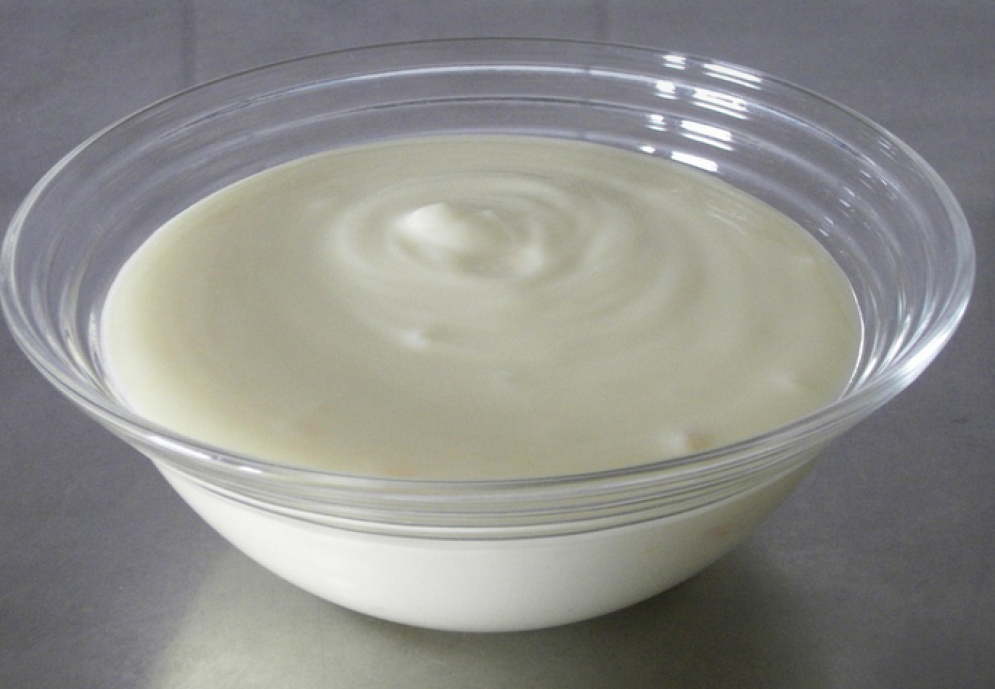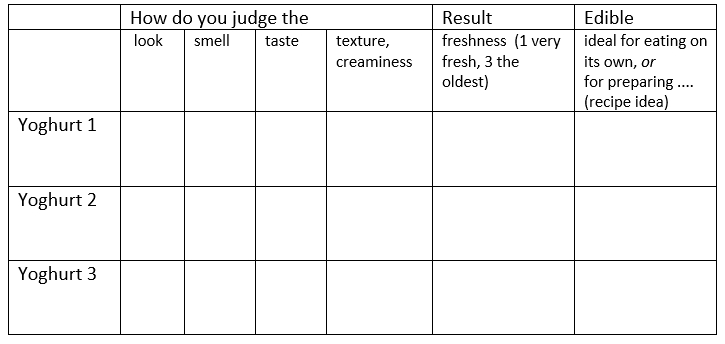

Is it still edible?
Best before and use-by dates - what do they mean and a sensory activity to test against food waste.
Výsledek učení
Students
- raise awareness of the best-before date and use-by date
- learn methods for determining whether food is still edible
Potřebný čas
2 hours
Potřebné vybavení
- food packaging with best-before date and use-by date
- three yoghurts (1. fully fresh, 2. semi-fresh - approx. 2-5 days before the best-before date),
- eggs (ideally fresh and 2 months old),
- 4 glass jars, 3 big spoons, small spoon for each student
Popis aktivity
Sensory workshop to explore quality beyond the best before date
You find something in the fridge or kitchen cupboard that is past its best-before date. Many people think that the food must now be thrown away. But that's not the case. In the activity, we learn how you can recognise whether the food is still edible or not.
1. The 'best-before' test against food waste
- Here you find different food packaging.
- Do you find any information on the packaging regarding the shelf life?
What is the difference between best-before date and use-by date?
- The best-before date does not say when something is unfit for consumption! It indicates the time until which the manufacturer guarantees specific properties of a product if it is stored correctly and in sealed packaging.
If you check the product with all your senses for its texture, appearance and odour and does not notice any abnormalities, it is still good and can still be consumed.
Tip: On this poster you will find guide values that will help you to better estimate how long certain products can usually be beyond the best-before date - always assuming that you have stored well.
Examples:
- yoghurt - plus 5 days
- cheese - plus 3 weeks
- butter - plus 3 weeks
- honey - plus 1 year
- flower - plus 1 year
- rice - plus 1 year
In the case of highly perishable food such as raw meat or fish, a ‘use by date' must be indicated. In contrast to the best-before date, products that have passed this date are no longer considered safe and edible.
2. The yoghurt sensory test against food waste
Imagine: You look in the fridge and notice that the yoghurt has expired. The best-before date has passed. We have learnt that the best-before date is not an expiry date: But is it still good?
We do the test!
Here you have 3 yoghurts (Students get the yoghurt in glass jars without packaging, so they don't know which yoghurt is fresh, which is semi-fresh and which has already past its best-before date).
Judge with your senses - by seeing, smelling and tasting. Describe your perception. Can you recognise the different stages of freshness?

Video Yoghurt-Tasting: Youtube-link
3. The egg test against food waste
Eggs do not change their appearance when they are no longer edible. You can easily check the freshness of eggs with a glass of water: Carefully place the raw, uncooked egg in a glass of water. If the egg sinks to the bottom of the water, it is still fresh and can be eaten. If the egg floats to the top, it is already old and should no longer be eaten.
Why is that the case? The older the egg, the larger the air bubble inside.
Additional material:
- Wiener Tafel SensorikLabor (link in German)
- Poster Ist das noch gut? (link in German)
- Sensoric Lab: Homemade Curd (from „old“ milk) Youtube-link
- Sensoric Lab: My Fridge Youtube-link
- Trust your senses, train your senses at „Dr. Feinsinn“ sensory lab link
Realizace aktivity
Natural sciences: understanding of the science behind the concept of freshness and spoilage of food (microbiology, chemical processes)
Economics, Geography: household management
Ethics: understand the ethical considerations surrounding food waste and its impact on the environment and society.
Culinary Arts: practical skills related to food storage and quality.
